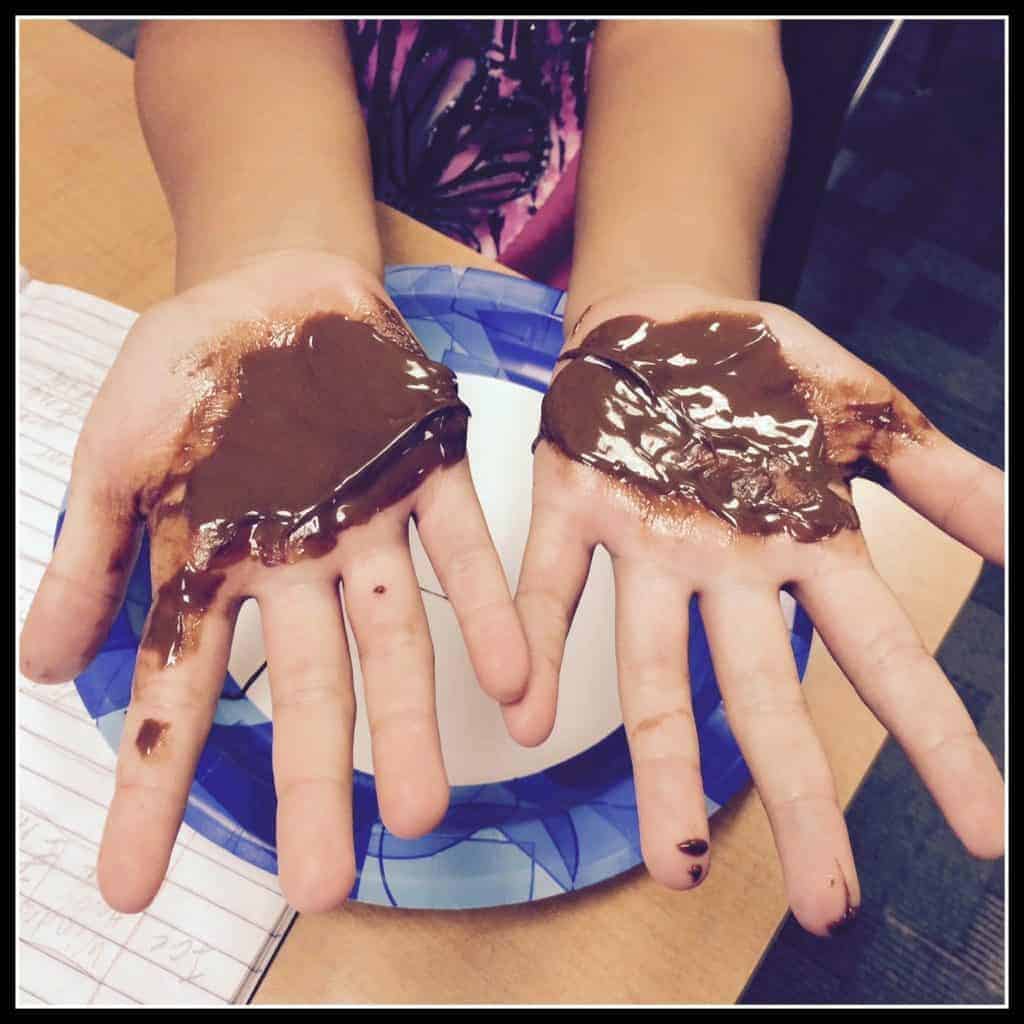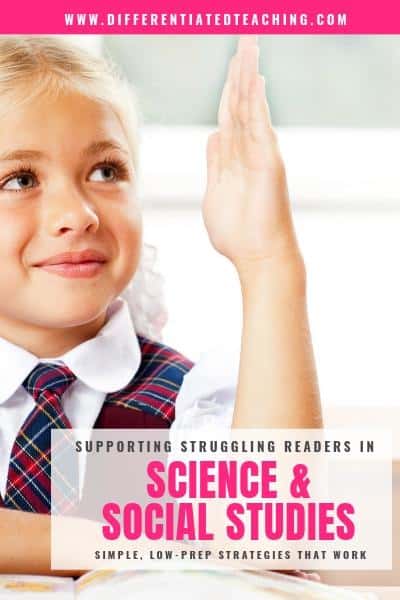A beginner’s guide to teaching energy
Welcome back to another Science Saturday! We are just wrapping up our 10-day unit. Teaching energy has been a really fun one for me and the kids.
You’ll notice we only covered:
Sound, light, and heat energy in depth.
We worked in a little mechanical energy on the first day, but our district has a separate unit on force, motion, and mechanical energy later on in the school year.
Teaching Energy: Hands-on Activities, Resources and Lessons
Here’s a peek at what we’ve been up to. I tried to lay out the unit overview in a quick and easy to read format.
Day 1: What is Energy?
We started our inquiry into energy by creating a mind map in our science journals.
As the kids made theirs, I called on volunteers to share their understanding to create a shared mind map of our collective understanding.
This was a great intro activity because it allowed my students to start thinking about what they already knew on the topic (nothing like activating some prior knowledge), and it gave me a clear understanding of who had misconceptions and what areas we really needed more intensive attention on.
After finishing our mind map, I put the kids into groups to read the mini-book Energy is Everywhere.
When teaching energy, it’s a good thing to take into consideration students with different abilities.
There are three levels of this book, which was perfect for my group because I have a range of students and background knowledge so I was able to assign kids to a book that was just hard enough to give them new information but not so hard that they were totally confused.
The groups read together and took shared notes in their science journals.
We wrapped up our lesson by sharing out our notes and looking back at our mind map to see if our understanding had changed at all.
The kids had lots to say as they noticed some misconceptions that we had only 30 minutes earlier. It was really cool to see.
Days 2-3: Sound Energy
We started out with sound energy because I have a group of tappers this year!
They are full of sound energy…all the time. This just let me channel it into something more useful.
Each day we did an investigation and a little learning.
It kept things fun, and the kids really got the chance to explore while they learned to help fit their new knowledge into their pre-existing schema.
The first day, we watched a short BrainPopJr. video on sound energy.
Then the kids went out into our common area to use cups to investigate how they could manipulate pitch using glasses and water.
After documenting their learning, the kids were challenged to work in groups to play either “Hot Cross Buns” or “Mary Had a Little Lamb” using only three glasses and water.
The kids reflected on this experience in their science journals, writing about what they learned about manipulating sound to create music.
Of course like the good science teacher I am, Mr. D, Little Bean, and I tried this one out before I took it into class.
It was a great activity for a Saturday.
The second day, we explored sound vibrations using metal cans, plastic wrap, and rock salt.
The kids had to problem solve to figure out how to make the salt move without touching the can.
There was lots of trial and error before they realized that they could use sound energy to make the salt move!
Days 4-5: Light Energy
As we worked with light energy, my goal was to explore how the light can be manipulated and bent.
This was important because we were going to use this to direct the sunlight into our solar ovens later in the unit, but it was also fun.
The kids played a target practice game as they explored how they could “move” the light from a stationary flashlight using a mirror.
This is a great teaching energy activity, the students love it!
Each group was given a target to hit.
They had to write in their journals to explain what they did to move the light and why they think it worked.
The kids had a great time trying to hit the target, and they really felt like it was a game vs. an experiment.
Little did they know they were learning about light at the same time!
Days 6-7: Teaching Energy Transformation (Heat/Thermal Energy)
Out of all the forms of energy, my students seemed to have the best grasp on thermal energy.
My big goal was for them to make connections to the Sun being a source of thermal energy (to prepare them for the solar oven project) and the idea that thermal energy causes changes in matter.
After watching a BrainPopJr. video on Heat Energy, the kids and I had a great discussion about where they see heat energy around us.
We even came to the conclusion that our hot cars on a sunny day are an example of heat energy from the sun.
We did a brief experiment focused on the idea that heat energy changes matter.
The kids were put into groups. and given three ice cubes, three pieces of chocolate, and three paper clips.
They hypothesized what would happen to the items when placed by the window for five minutes and held in their closed hand for five minutes.
Our third set was just left in the room as a control.
The results were MESSY, but so fun.
The kids created a table of their before and after diagrams, which allowed us to have a FABULOUS discussion about how the source impacted what happened.
The kids came to the realization that body heat impacted the items more quickly, but the heat from the sunlight coming in our window would have eventually served the same purpose.
Of course, they also had some questions about the fact that the paperclip didn’t change at all and whether the starting temperature of the three objects impacted the effect of the heat. (Which led to an extra mini-experiment later that day where were started all three items in the freezer.)
Day 8: Solar Oven S’mores
Teaching energy can be so much fun when you have an awesome and yummy project!
My partner teacher and I (we share adjoining rooms) did this activity together.
Over the course of the week, the kids brought in boxes of different sizes and shapes.
We wanted the kids to have some idea of what to do so they watched a short, super straight-forward video by Steve Spangler to give us some background knowledge.

From there the kids were put into groups to select their materials and draw their design.
They had the choice to follow the design they saw in the video or modify it to make it more effective.
Surprisingly, even my most conservative, non-risk taking students decided to go their own direction.
In fact, only one chose a pizza box to start with! The results were not always pretty, and I was not even sure we would have any luck when we actually put them in the sun.
Once they diagrammed their design, they were allowed to get their supplies and get to work cutting, gluing, and designing.
Since it was cold and cloudy, we only did our design on the first day.
Thankfully, Day 2 was sunny (and windy) so we were able to get our solar ovens outside to cook and get our reflections written the same day.
Days 9-10: Review & Assess
We did our review in stations. One group was with me doing a whiteboard quiz.
Three other groups were around the room working on related review activities.
The kids rotated through all four stations before they completed our assessment.
Station 1: Teacher Review
Using questions based on our standards and essential questions, I had a small group quiz game at my table.
Some kids used whiteboards and markers to record their answers, but we also used our two iPads and the free app Show Me in place of a couple whiteboards.
Station 2: Mind Map Reflection
It was really important for me that the kids had a chance to reflect on their learning in this unit.
Therefore, we took our original mind maps to help us think about our learning.
The kids wrote a short reflection and had a chance to update their mind map to include their new understanding.
Right before they took the test, we reviewed these as a class to create a new version of our class mind map.
Station 3: Energy Games
Although they were from different levels on Science A-Z, I really liked the variety of energy games available.
I let the kids choose their game and materials, and they were able to play partner games during this station.
There was lots of great vocabulary review, but the kids just saw it as fun!
Station 4: Science Through Literature
The final station had my students reading and practicing their nonfiction note taking (which is something we’ve been doing in our reading time and during our Genius Hour) using a variety of energy books.
I got a collection from the library and the energy leveled readers from Science A-Z.
So there you have it!
Feel free to comment and tell me about all those great blog posts and resources that make teaching energy great!
Related Posts:


















